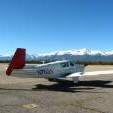M20F overhead vent cover replacement
-
Members Online
- Larry
- Joe Linnebur
- Danb
- Max Clark
- 00-Negative
- 1980Mooney
- AspiringOwner
- FLYFST
- GeeBee
- Twing207
- Rick Junkin
- Fix
- Sinclair51
- Rmnpilot
- OR75
- Medicpilot
- Gary0747
- Sabremech
- pirate
- eman1200
- kortopates
- 65MooneyPilot
- mgtrevor
- exM20K
- Dwb62
- Hank
- jlunseth
- Shiroyuki
- midlifeflyer
- PT20J
- 47U
- DXB
- Raistlin
- 64U
- mgroves3
- TCC
- outermarker
- HALL_A
- Paul Thomas
- MB65E
- Z W
- peterl
- Slick Nick
- AndreiC
- DC_Brasil


Recommended Posts
Join the conversation
You can post now and register later. If you have an account, sign in now to post with your account.